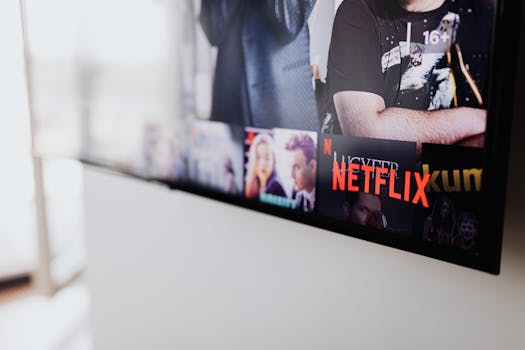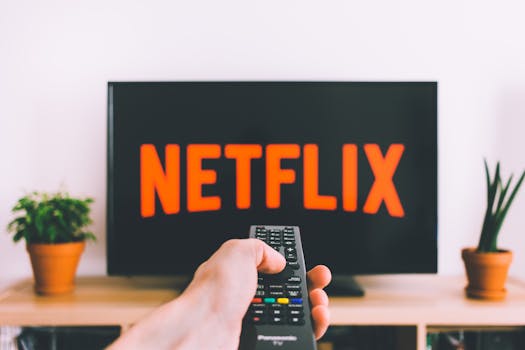TV Shows
How Streaming Changed TV Ratings Forever: The New Era of Audience Measurement
Streaming tv ratings have redefined how we measure TV success. Discover how these changes impact the shows you love, audience power, renewal odds, and global TV storytelling.
Advertisement
Imagine gathering your friends to watch a favorite TV series at the same time—once, TV was an event on the calendar. Streaming changed that habit, making streaming tv ratings an industry-wide challenge overnight as on-demand viewing redefined success, urgency, and popularity.
More viewers began to watch what they wanted, when they wanted. Now, measuring true popularity for tv shows requires new strategies. The networks, advertisers, and even creators track everything from binge sessions to drop-off points—ushering in a fresh set of rules for how streaming tv ratings are counted.
This evolution affects what gets renewed, canceled, or remade. Dive in to see how streaming tv ratings are measured, interpreted, and used—and how they’re reshaping the shows you love watching, week after week.
Streaming TV Ratings Upended: Shifting Networks from Shared Timetables to Personal Choice
Classic network television structured our evenings. Everyone watched shows at set times, and ratings captured this shared energy. Streaming tv ratings tore up that script. Now, stories are individually chosen and experienced, breaking those collective rituals.
This shift led executives and analysts to use new insights. Rather than live overnight Nielsen scores, platforms look at streams per minute, total views, and even partial completion data. Streaming tv ratings mean success looks very different from twenty years ago.
From Live Appointments to On-Demand Convenience
Network executives once celebrated big premieres with mass audiences tuning in as one. Now, streaming tv ratings reflect watch-anytime ease. Most viewers opt for late-night rewinds or weekend marathons over televised debuts.
A person might say, “Let’s finish that series on Friday night,” rather than planning their week around a live broadcast. Every viewing becomes a unique event driven by individual schedules, not network programming.
This new behavior forces networks and streamers to rethink what “hit show” means. Streaming tv ratings must track not just first-day numbers, but viewing trails that span weeks or even months.
Granular Data Unlocks Audience Patterns
Before streaming, networks only got broad viewing estimates. Now, platforms know exactly who rewinds a dramatic scene or abandons an episode halfway. This granular data shapes content creation, marketing, and renewals.
A showrunner might receive reports showing that episodes three and four see the most binge drops. They can then adjust pacing or story arcs for better audience retention. Streaming tv ratings become storytelling tools as much as performance metrics.
Audiences find their own flow, and platforms adapt by serving up highlights, reminders, or even a “continue watching” prompt to draw people back in—turning passive tracking into active re-engagement.
| Measurement Method | Old TV (Network) | New TV (Streaming) | What Viewers Can Do Next |
|---|---|---|---|
| Overnight Ratings | Premiere numbers determine hits | First-24-hour streams assessed, but not final say | Watch at leisure, impact ratings over weeks |
| Delayed Viewing | Limited tracking via DVR | All catch-up streams count in analytics | Revisit episodes and still support a favorite show |
| Audience Demographics | Generalized surveys, sample panels | User accounts, direct device data | Personalize recommendations based on habits |
| Binge Behavior | Not measured | Time spent, episodes in a session tallied | Binge seasons, affect show renewals |
| Real-Time Feedback | Phone-in voting, rare events | Instant feeds, ratings, and completion rates | Leave feedback, impact future content |
Advertisers and Creators Adapt: Rethinking Success in the Streaming Age
Advertisers can’t rely on classic commercial breaks anymore. Streaming tv ratings introduced dynamic ad-insertion and targeted spots. Meanwhile, creators must respond to what precise data says viewers love—or skip over entirely.
This change means studios interpret streaming tv ratings minute by minute, assessing whether a show draws engagement throughout or loses viewers halfway. Success and renewal now require more active monitoring than one-size-fits-all ratings ever did.
Adjusting Ad Strategies for a Binge-First Audience
Traditional ad pacing falls flat with binge-watchers who can blast through entire seasons. Ad buyers analyze streaming tv ratings to choose when, where, and how to insert relevant commercials, maximizing impact without disrupting viewing flow.
Networks might test out just one pre-roll ad per episode, compare drop-off rates, and adjust campaigns based on viewer responses. Script your own viewing: skip, pause, or interact when prompted—it’s that flexible now.
- Test out shorter, skippable ads to keep viewers engaged across multiple episodes without frustration.
- Explore audience segments to target ads to binge-watchers, casual viewers, or those pausing mid-episode.
- Reward viewers who finish a season with tailored promos for other shows they’ll likely enjoy.
- Use interactive ads that invite instant feedback, not just passive viewing, to gauge engagement.
- Monitor hour-by-hour changes in streaming tv ratings to fine-tune ad frequency and creative choices on the fly.
Streaming ad innovation pivots with ever-changing data. Stick to relevance, minimize disruption, and reward attention—every decision reflects granular measurement, direct from streaming tv ratings.
Show Creators Use Insights to Shape Content
Writers and producers track scene-by-scene audience response on platforms delivering streaming tv ratings. They can experiment—maybe three shorter, punchier episodes, or a longer final chapter, responding to evidence over hunches.
For showrunners, the creative process gets feedback loops. A show with a big drop-off after episode five may adjust mid-season plots, or tighten narratives for quicker engagement.
- Craft early cliffhangers to boost episode completion rates, increasing the chance of full-season renewals.
- Align major reveals with peak viewing times indicated by streaming tv ratings data.
- Shift episode lengths based on audience drop points, matching preferred formats in that market.
- Test alternative endings on smaller groups before committing, using streaming data for real reaction measurement.
- Use engagement spikes—such as character introductions—to plan marketing pushes and social media strategies.
Creators aren’t guessing anymore. They let empirical evidence—streaming tv ratings—set their pace, form, and even the genres getting greenlit each year.
Binge-Watching and Episode Release: Real Examples of New Viewing Patterns
Streaming tv ratings show that the binge model changes how shows are consumed—and discussed. Networks observe three main release formats, each shaping online talk, social media moments, and renewal decisions in unique ways.
Weekly Release Builds Long-Lasting Conversations
Releasing one episode per week keeps shows in conversation for longer. Streaming tv ratings in this format reveal loyal, consistent viewing, with water-cooler talk and anticipation building over several months.
A fan might tell friends, “No spoilers until Saturday, okay?” This structure invites speculation, theory-sharing, and a sense of community, keeping the show relevant in social feeds week after week.
The slow build can even revive interest mid-season if critical turns or guest stars are planned, as buzz grows organically from episode to episode—keeping pressure on consistent performance in the streaming tv ratings.
Full-Season Drops Fuel Fast Binge Cycles
Dropping all episodes at once powers weekend-long marathons. Here, streaming tv ratings initially spike, then taper as discussion happens almost instantly. “We finished it in one sitting,” friends might say, eager to avoid spoilers by watching quickly.
This format fits thrillers, mysteries, or high-stakes narratives best—where each episode’s cliffhanger drives the next. However, shows can fade from discussion quickly, powering content to the top of the charts for short, impressive windows.
Binge cycles demand streaming tv ratings analysis that tracks both peaks and drop-offs, noting whether people actually finish the full run, or move on after a few hours.
Global Audiences Redefine Popularity: Why Local Stories Matter Online
Platforms serve viewers everywhere, so streaming tv ratings now mean measuring global taste. A show can soar in South America while staying low-profile in the US—yet still get another season thanks to international love.
This creates new creative opportunities and challenges. Cultural adaptations and subtitles become tools for worldwide engagement, influencing everything from music choice to setting and plot twists.
Real-Time Local to Worldwide Success Paths
When a show takes off in one country, networks can respond by globalizing promos or subtitling faster. “I heard it’s big in Spain,” a curious viewer might notice, then join a wider community as fan forums and tweets go worldwide.
Streaming tv ratings highlight how the right promotional push can turn a sleeper hit into a global sensation. Action instructions: look for trending international titles, and try out a new language or dubbed version for a different view.
Global reach also helps platforms spot cultural trendsetters, adapting future shows to tap into shared interests revealed by streaming tv ratings from overseas audiences.
Tailoring Recommendations with Cultural Coding
Platforms examine streaming tv ratings to recommend shows tailored by region—thrillers in the Nordics, romance in Brazil, teen dramas in the UK. Algorithmic programming creates feedback loops, feeding each audience what the numbers prove they crave.
Personalization tips work in any region: finish a series in your own time, then see a whole new world open up in your recommendations. Streaming tv ratings feed these loops, supporting both local language debuts and international blockbusters.
This model encourages you to share new favorites across borders. “You’d love this French mystery!” means the streaming tv ratings ecosystem expands viewers’ horizons one episode at a time.
Data Privacy Meets Viewer Empowerment: Balancing Insight with Respect
Audiences want tailored experiences, but not at the expense of privacy. Streaming tv ratings aggregate data while offering options for personalized viewing, account management, and privacy settings with clear visibility.
Platforms communicate exactly what gets tracked—how long you watch each episode, if you re-watch, or if you skip the intro. This empowers viewers to set boundaries or embrace holistic personalization.
Giving Control Back to Viewers
Platforms increasingly offer settings like “clear watch history” or “pause viewing activity tracking.” You’ll find controls to reset suggestions in one click—helping audiences shape their experiences actively, rather than letting streaming tv ratings fully dictate choices.
Pride in managing recommendations grows. Someone might say, “I reset my history so I can get better suggestions,” shifting from passive to proactive platform use. These levers turn viewers into curators.
List your privacy options, compare, and change them as your preferences change. Even opting out of some tracking can still provide a tailored but private streaming experience, balancing insightful streaming tv ratings with personal boundaries.
Transparency as a Two-Way Relationship
Viewer feedback helps platforms evolve privacy standards. When users demand less intrusive data, companies can voluntarily anonymize streaming tv ratings, ensuring safety and satisfaction for all parties.
For example, if a feature feels invasive, customers speak out in forums or reviews—”I want more control over what’s tracked.” Providers respond directly to these signals, updating policies and user settings in real time.
This partnership leads to regular updates and visible commitment to privacy. Look for notification pop-ups, explanatory emails, and agreement checkboxes—clear evidence that data tracking and streaming tv ratings respect user wishes, not override them.
Renewal, Cancellation, and the Future: Concrete Steps for Navigating Streaming TV Ratings
Knowing how streaming tv ratings work empowers you to support favorite shows, influence what stays or goes, and even spot renewal signals before public announcements. Engaged viewing has real-world impact now.
By understanding what counts and how platforms record interaction, fans gain powerful tools to help shows succeed in the all-important streaming tv ratings calculation.
- Finish every episode and season for a show you love; complete viewing directly boosts renewal odds in most streaming tv ratings systems.
- Rate or “thumbs up” episodes rather than just watching—active feedback weighs heavily and shapes next season decisions.
- Re-watch favorite scenes or episodes, especially shortly after release, to add “engagement” points to high-priority content for platforms.
- Recommend shows through platform sharing tools, driving new viewers and spiking streaming tv ratings at key periods.
- Set calendar reminders to watch on premiere week—early high numbers encourage fast-tracked renewals and more aggressive marketing pushes.
Stories Fuel the Numbers: The Human Side of Algorithms
Streaming tv ratings now shape what gets made, but stories still drive connection. The best shows earn loyal fans who share, binge, and champion their favorites—making the algorithm amplify human enthusiasm, not just mathematical formulas.
Successful strategies blend data with intuition. Platforms might greenlight a quiet drama due to steady engagement, even if initial numbers are modest. Likewise, surprise viral hits gain traction from authentic excitement visible in streaming tv ratings jumps.
Every stream, re-watch, and vote makes a difference. Audiences power the system—so what gets measured reflects not just passive habits, but active choices and evolving tastes for tomorrow’s tv shows.
You may also like

Directors Who Changed Cinema Forever: The Film Directors Who Shaped Modern Storytelling
Meet visionary film directors whose daring ideas, artistic vision, and storytelling mastery permanently changed the world of cinema.
Keep Reading
The Art of Movie Posters: Why Design Still Matters
Appreciate movie posters as timeless visual art that captures story tone, emotion, and lasting cinematic identity in every frame.
Keep Reading
Hidden Movie Endings That Completely Change the Story
Discover hidden movie endings that completely shift meaning, twist expectations, and make audiences rethink the story’s truth.
Keep Reading

